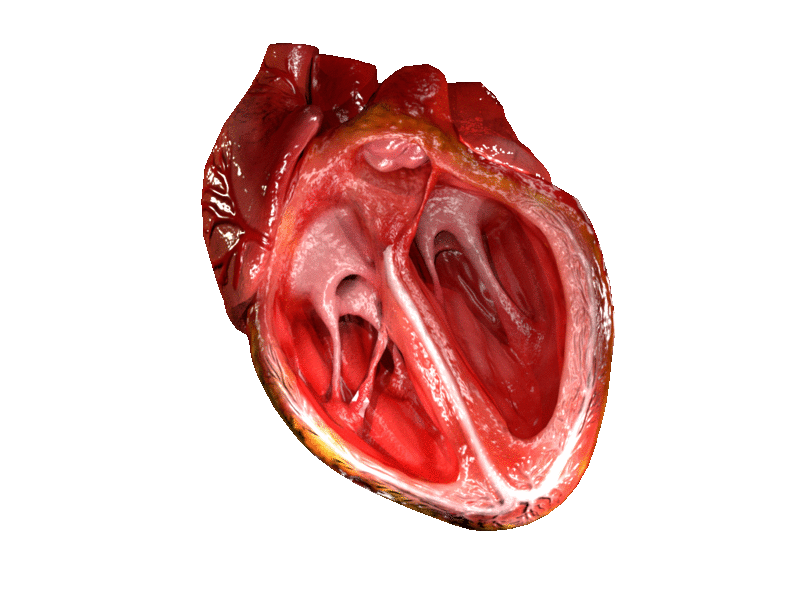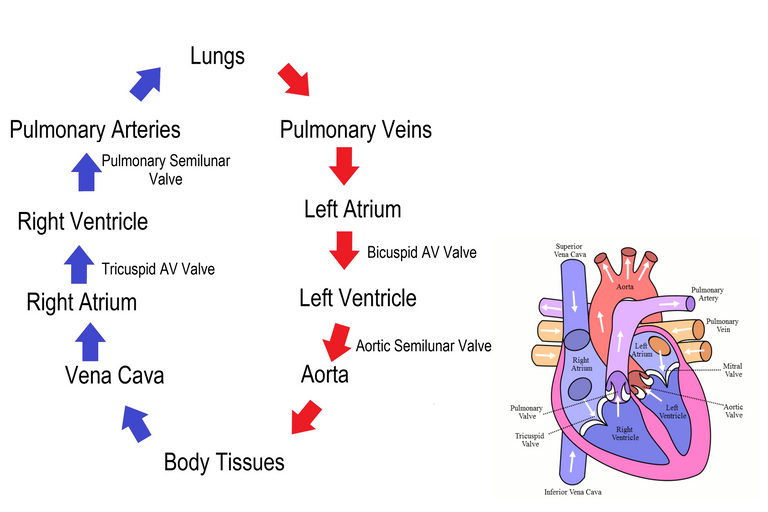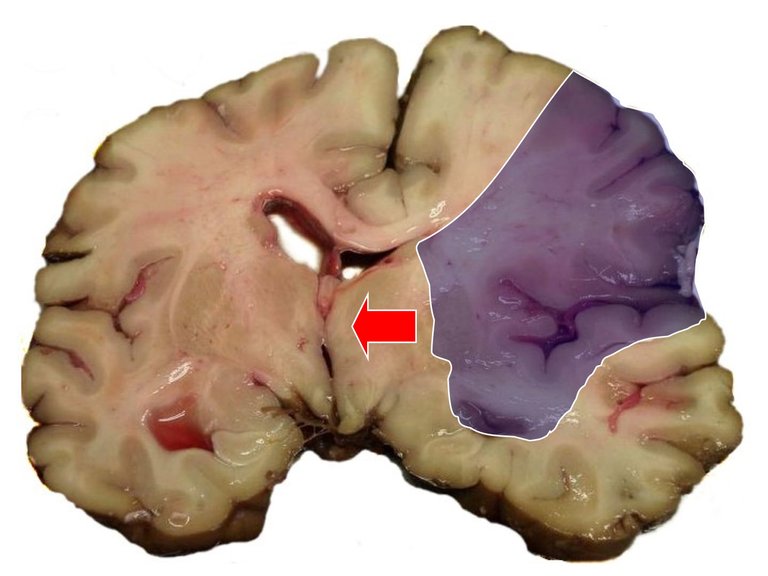Today, the 29th of September is celebrated as “World Heart Day”. The heart is one of the major organs in the body. Psychologically, it is the pathway to our whole being. Biblically, it is the center of our lives.
Heart diseases are one of the most common diseases worldwide. In the United States, They are the leading cause of death. At least one in every four deaths is due to heart disease, According to the Center for Disease Control and Prevention (CDC).
To commemorate World Heart Day, we will get to know about one of the most common diseases of the heart.

By DrJanaOfficial - Official Website, Support, CC BY-SA 4.0, Wikimedia
THE HEART
The heart is a muscular organ in the body. It is shaped like a cone. It is about the size of the owner's fist. The weight of the heart is heavier in men than in women. The heart sits pretty in between the lungs (in the thoracic cavity) and tilts more to the left.
STRUCTURE OF THE HEART
The heart is made up of 3 layers.
- Pericardium
- Myocardium
- Endocardium
Pericardium
- It is the outermost layer.
- It is the inelastic part of the heart.
- It helps to prevent overdistension of the heart.
- It is made up of 2 sacs:
- fibrous pericardium (Outer sac)
- Serous pericardium (Inner sac)
- Serous Pericardium is made up of 2 layers:
- Parietal Pericardium
- Visceral Pericardium
- In between the parietal and visceral pericardium is the pericardial fluid which helps to prevent friction between the two layers.
Myocardium
- It is the middle layer of the heart.
- It is involuntary (can't be controlled by the individual).
- It contains specialized conducting fibers that help transmit electrical signals.
- It is responsible for the pumping action of the heart.
- It is thickest on the left ventricle (a chamber of the heart).
Endocardium
- It is the innermost layer of the heart.
- It is smooth which ensures easy flow of blood.
- It lines the heart chambers and heart valves.
HEART CHAMBERS
The heart is made up of 2 sides (left and right) and 4 chambers.
- Right atrium
- Right ventricle
- Left atrium
- Left ventricle

By Christinelmiller - Own work, CC BY-SA 4.0, Wikimedia
Right Atrium
It is separated from the right ventricle by a tricuspid valve. It collects the blood coming from the upper and lower part of the body and transfers it to the right ventricle.
Right Ventricle
It receives blood from the right atrium through the tricuspid valve to the pulmonary circulation.
Left Atrium
It collects blood from pulmonary circulation to the left ventricle.
Left Ventricle
It receives blood from the left artrium through the bicuspid valve and transfers it to systemic circulation (circulation to the whole body).
It is the most delicate part of the heart.
We now have an insight of how the heart looks like, now let's get to know about blood pressure.
What is Blood Pressure
Blood Pressure is the force of blood on the walls of blood vessels. It is very important to maintain blood pressure. Very high blood pressure can lead to the rupture (break) of blood vessels. Also, very low blood pressure can lead to the death of tissues, especially in vital organs such as the kidney and brain.
Blood pressure varies naturally by gender, age of the individual, posture, and time of the day. It is higher in women than men. It reduces during sleep and rest and increases with age.
Types of blood pressure
- Systolic Pressure
- Diastolic Pressure
Systolic Pressure
It is the pressure exerted when blood is pumped into arteries. The normal systolic pressure is 120mmHg.
Diastolic Pressure
It is the pressure exerted in the arteries when the heart beats. The normal diastolic pressure is 80mmHg.
The normal blood pressure is 120/80 mmHg. A consistent rise in blood pressure above 140/90 mmHg is referred to as Hypertension.
Types of hypertension
There are two types of hypertension.
- Primary Hypertension
- Secondary Hypertension
Primary Hypertension
Also, referred to as essential hypertension. It is a type of hypertension that has an unknown cause. It is usually asymptomatic ( no symptoms). There are some risk factors associated with it such as;
- Family history
- Stress
- Obesity
- Smoking
- High intake of salt
- Alcohol
- Diabetes mellitus.
Secondary Hypertension
Also, referred to non-essential hypertension. It is a type of hypertension that is due to other diseases.
Causes of secondary hypertension
- Kidney disease.
- Pregnancy
- Adrenal gland disease
- Drugs example; Oral contraceptives.
Signs and Symptoms
There are peculiar signs and symptoms associated with high blood pressure such as:
- severe headache
- anxiety
- difficulty sleeping
- chest pain
- shortness of breath
- fatigue
- lightheadedness
- excessive sweating
PS: Severe headache is a classical sign of hypertension.
Effects of hypertension
On the heart
High blood pressure can lead to chronic diseases such as heart failure; A condition where the heart can't carry out its function of pumping a sufficient amount of blood to meet up the demands of the body.
On the kidney
Hypertension can lead to kidney damage which can be restored if tackled on time. However, prolonged kidney damage can further increase blood pressure and lead to complete loss of kidney function (kidney failure).

By Marvin 101 - Own work, CC BY-SA 3.0, Wikimedia
On the Brain
High blood pressure leads to rupture of blood vessels which leads to stroke due to sudden disruption of blood flow in the brain. Depending on the size of ruptured blood vessels and position, it can lead to progressive disability, loss of function, or death.
On Blood vessels
Hypertension can lead to the weakening of blood vessels (aneurysm), and it can also increase the risk of atheroma (accumulation of materials on the walls of the artery).
Primary Blood Pressure can be managed naturally by:
- Adequate rest and sleep.
- Proper rehydration.
- Avoiding strenuous activities.
- Reducing alcohol intake.
- Reducing salt intake.
- Exercising regularly.
MEDICATION
A lot of medication can be used to treat hypertension.
Anticoagulants
These medications help to prevent the clotting of blood. Example: Warfarin.
Angiotensin - Converting Enzyme inhibitors.
These medications help to expand blood vessels. Example: Lisinopril.
Beta-Blockers
These medications help to reduce heart rate. Example: Propanolol.
Calcium Channel Blockers
These medications can treat hypertension by relaxing blood vessels. Example: Amlodipine.
Cholesterol Lowering Medication
These medications can treat hypertension by reducing the level of cholesterol in the body. Example: Rosuvastatin.
Diuretics
These medications can treat hypertension by removing excess water from the body. Example: Furosemide.
Vasodilators
These medications can treat hypertension by expanding blood vessels. Example: Nitroglycerine.
PS: Depending on the cause of hypertension, a doctor can help prescribe a suitable option.
In summary, hypertension is a very common disease. It is the leading cause of stroke. It is best prevented by practicing safe health behaviors.
References
Healthline
World Health Organization
Medicalnewstoday
Ross & Wilson Anatomy and Physiology.
I hope this was beneficial to you.
Thank you so much.



